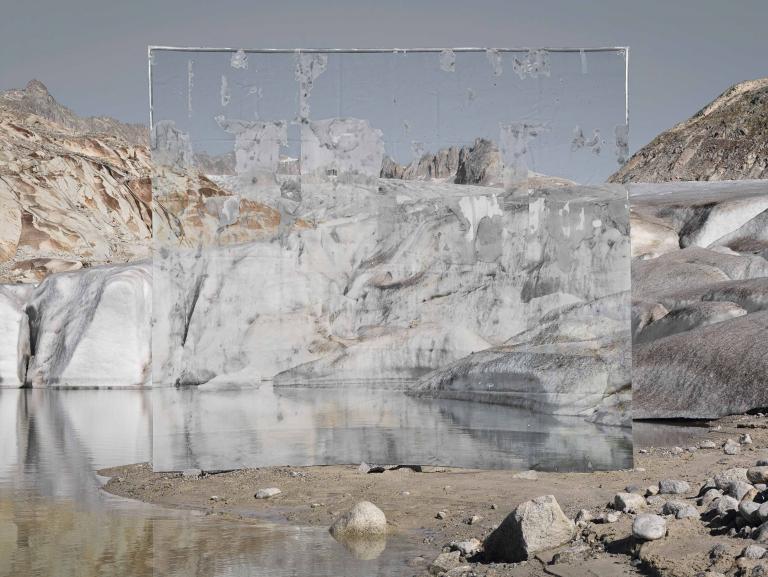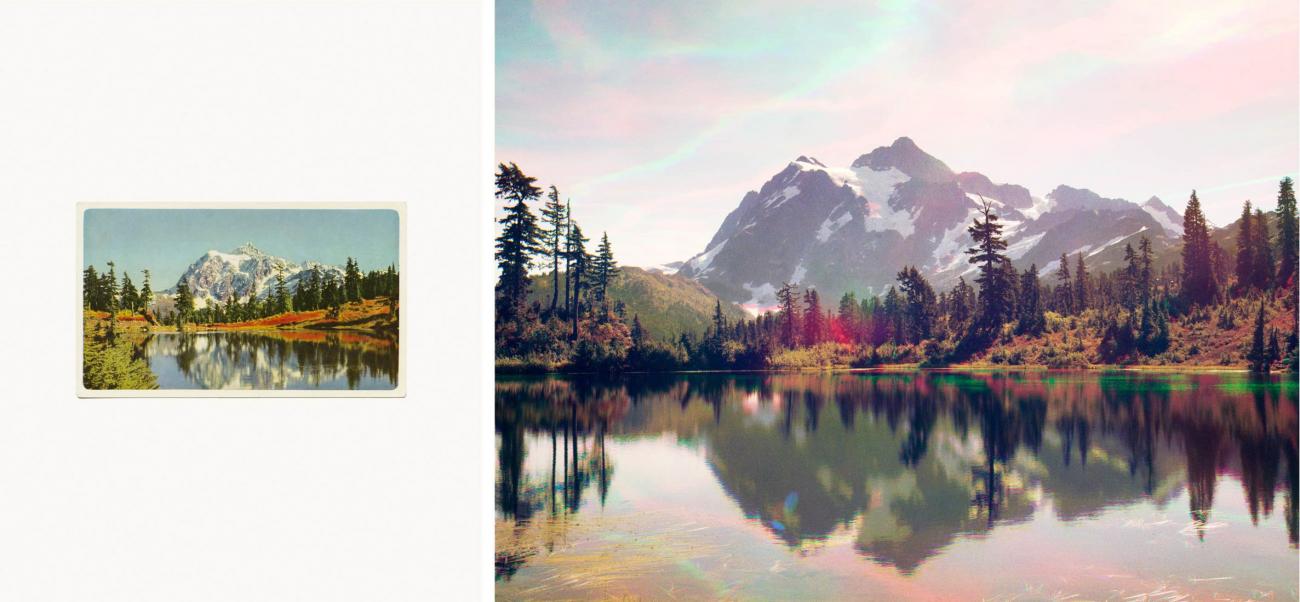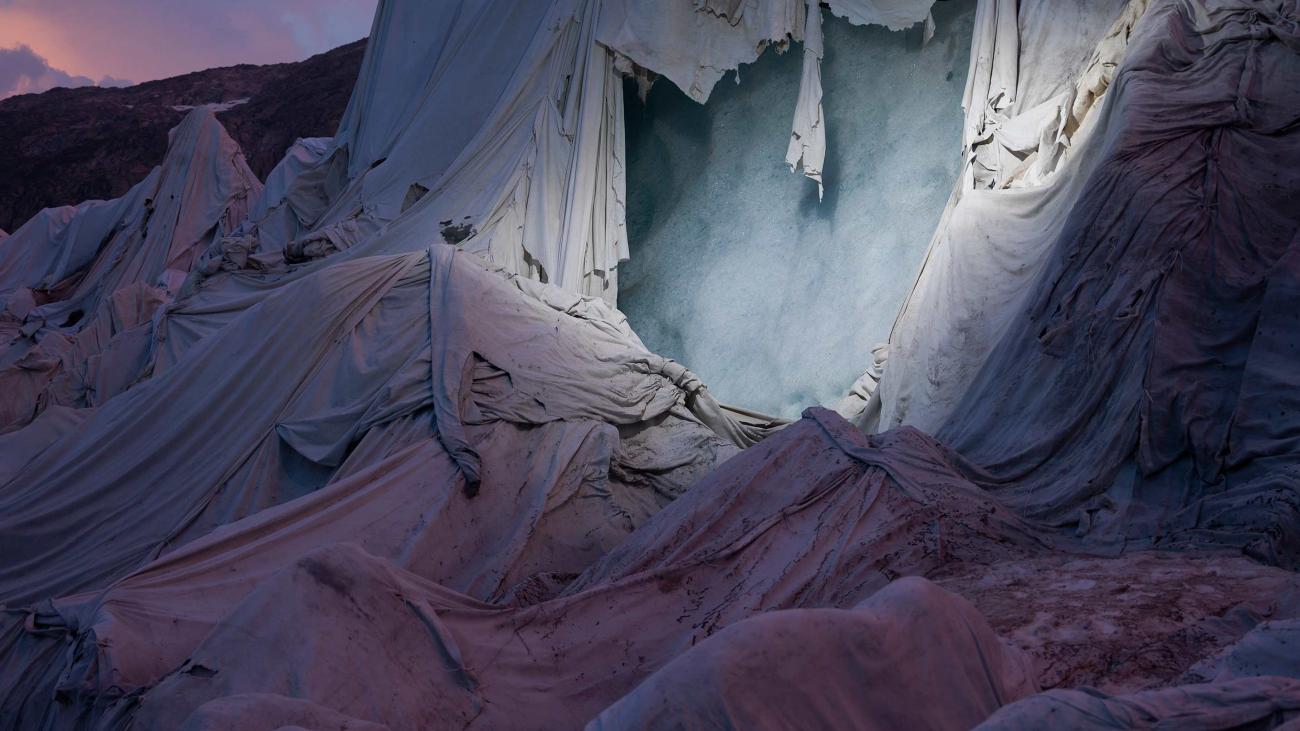Images largely shape our experience of reality. Just consider how imagery of nature continues to rise in popularity: only a society no longer grounded in their natural landscape is able to treat such a scenery as art.
Longing for a nature long lost, we instead immersive ourselves in paintings to appreciate the quality of untouched landscapes, we simulate snowfall for skiing experience, and we keep a piece of glacier ice as a relic of a different time. These natural and artificial landscapes blend together in When Records Melt, an exhibition to increase awareness of global climate change dangers through various photographic interpretations.
The exhibition is the result of a joint effort between Unseen Amsterdam and Project Pressure, a charity organization dedicated to documenting the world’s vanishing glaciers. For Unseen, Project Pressure selected works from international artists that focus on raising awareness through a variety of photographic interpretations, depicting issues surrounding the global environment in a new and inspiring context, and engage a large audience to inspire behavioural change — because a picture is worth a thousand words. Here are three works you shouldn’t miss:
Glacier du Rhône by Noémie Goudal, 2016

Melting glaciers are uniquely visual evidence of the pressing, yet mainly invisible issue of climate change. The poetic resemblance between a photograph and a vanishing glacier is striking, as both could be regarded as visual traces of something once there was. This double layer of representation becomes tangible in the work of French artist Noémie Goudal.
Goudal travelled to the Glacier du Rhône in Switzerland and created an on-site installation. The work consists of a large photograph of the glacier printed on biodegradable paper that slowly blends into its surrounding. The disintegration of the physical image emphasizes the intrinsically volatile nature of both the photograph and the glacier: “It’s such a strong, solid landscape when you look at it, and with the knowledge that it is disintegrating, that sense of fragility comes back into play.”
Mount Rainier by Peter Funch, 2016

The regression of glaciers preceded the development of color photography, which means that photography has only been able to capture glaciers as an object of abatement. The work Imperfect Atlas by the Danish photographer Peter Funch plays with the notions of physical decay and regression, by using RGB-tricolour separation to create his images; a technique that came about during the Industrial Revolution. Funch explores the meaning of landscapes as touristic hotspots, and positions the photographs next to historic postcards to showcase the gap between reality and simulation of the places we long for. Hello from postcard nature!
Rhône Glacier by Simon Norfolk and Klaus Thymann, 2018

This haunting image is created by Simon Norfolk and Klaus Thymann. A small business has draped a thermal blanket over a part of the glacier to prevent it from melting and to keep their touristic grotto in place. It's old nature covered up by next nature. The glacier has become a commodity, and the result is a surreal, nearly abstract image of a landscape that once was natural. The title of the work, Shroud, explicitly refers to the inescapable future of the landscape: “There is something insane about trying to reverse the inevitable. The gesture is as forlorn and doomed as the glacier itself.”
When Records Melt is part of Unseen 2018 and runs from the 21st to the 23rd of September. Visit unseenamsterdam.com for more information.


Comments (0)
Share your thoughts and join the technology debate!
No comments yet
Be the first to share your thoughts!